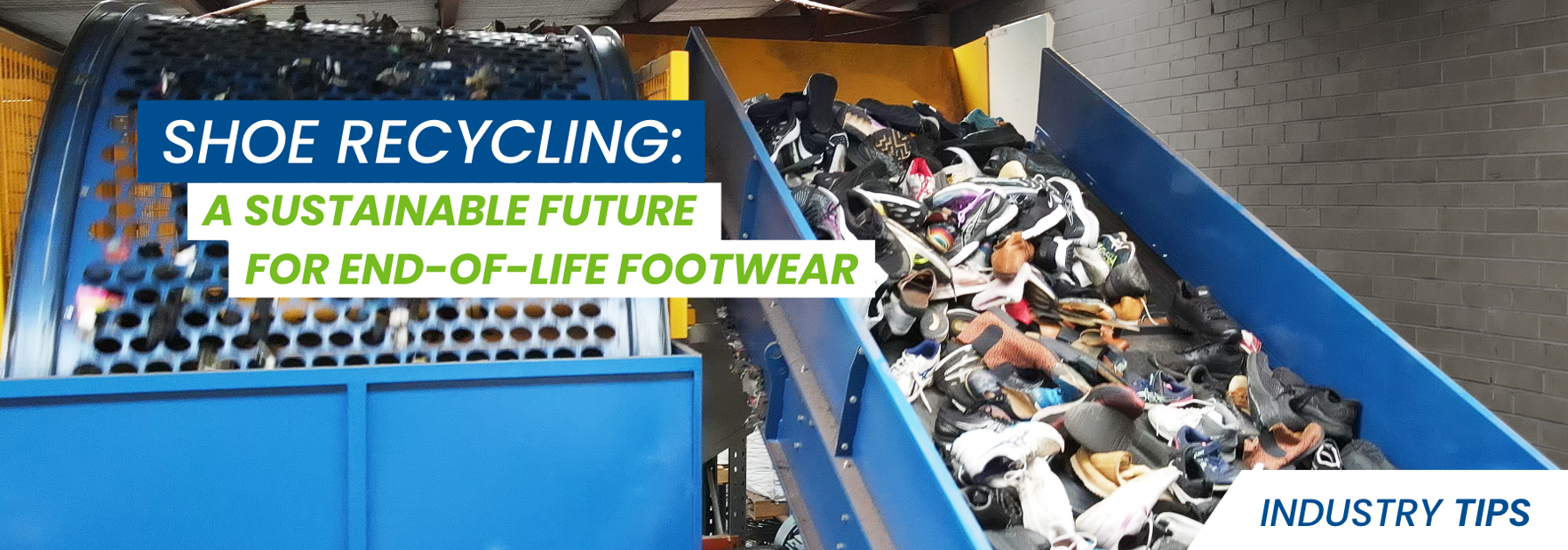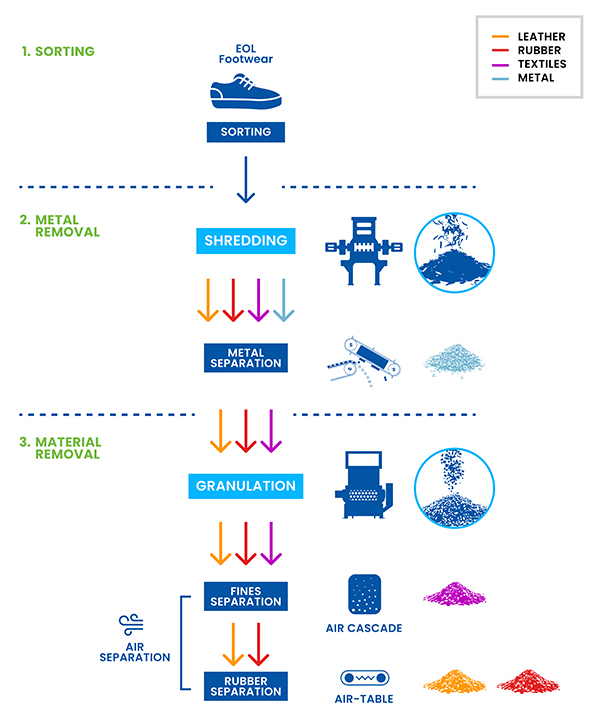Introduction
Fashion’s constant evolution and high demand for new shoes result in over 20 billion produced annually, contributing to environmental issues. The global footwear industry, expected to exceed $95 billion by 2025, accounts for 1.4% of manufacturing-related greenhouse gas emissions. Non-biodegradable materials make shoe decomposition challenging, taking up to 1,000 years, and landfill disposal releases toxic chemicals.
The need for sustainable shoe recycling to address End-Of-Life (EOL) shoe waste has become more apparent than ever.
Sustainability Options
To promote sustainability with discarded shoes, individuals can donate gently used pairs to charities or sell them online. For shoes beyond wear, collection points like shoe banks recycle or repurpose materials. Although EOL shoe recycling options in Australia are limited, ongoing efforts are focused on developing more efficient methods to address environmental concerns and foster sustainability. One such initiative is “TreadLightly” – a national recycling program in Australia that repurposes unwanted sport and active lifestyle footwear, fostering collaboration among various stakeholders in the sporting community to minimize environmental impact. Find out more.
Challenges
While the concept of recycling EOL shoes is appealing, it presents significant challenges. The complex construction of shoes, with multiple materials bonded together, makes the recycling process difficult. Shoes often contain dozens of materials, including metals, which hinder effective shredding and recycling. As a result, shoe recycling is not a common practice in Australia, and only a small percentage of shoes are recycled.
The Role of Shredding Technology in EOL Shoe Recycling
The use of shredding technology offers numerous benefits for shoe recycling. It allows for the efficient disassembly of EOL shoes, breaking them down into individual parts. This makes it easier to recycle each component, resulting in less waste and higher recycling rates. Shredding also simplifies the extraction of valuable materials, such as rubber, which can be repurposed to produce new products.
Shredding process:
Similar to other recycling systems like tyre and C&D, the shredding process can be outlined as follows;
- Sorting: Categorising shoes before batch processing enhances material yield and purity. High-foam-content shoes are recycled separately from leather-based ones.
- Pre-Shredding: Shoes are pre-shredded to expose embedded metal parts, ideally creating 20-30 mm chips.
- Metal Removal: Specialist equipment, including magnetic separators, removes metal components. Manual removal is an option but may be cost-prohibitive.
- Granulation: Further fragmentation into 3–6 mm crumb optimises yield and purity through a granulator after metal removal.
- Material Separation: Air separation technologies utilise particle size and weight differences for efficient separation of fines and rubber.


